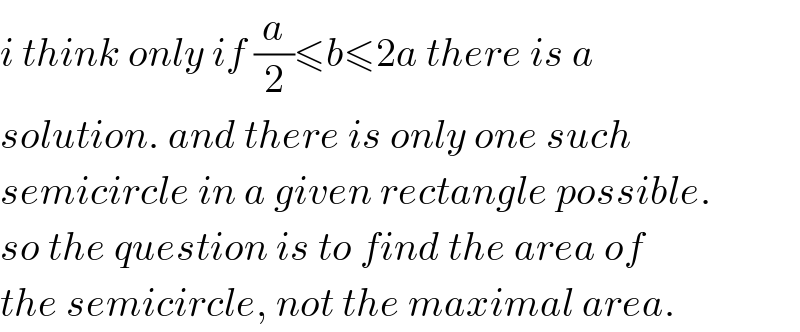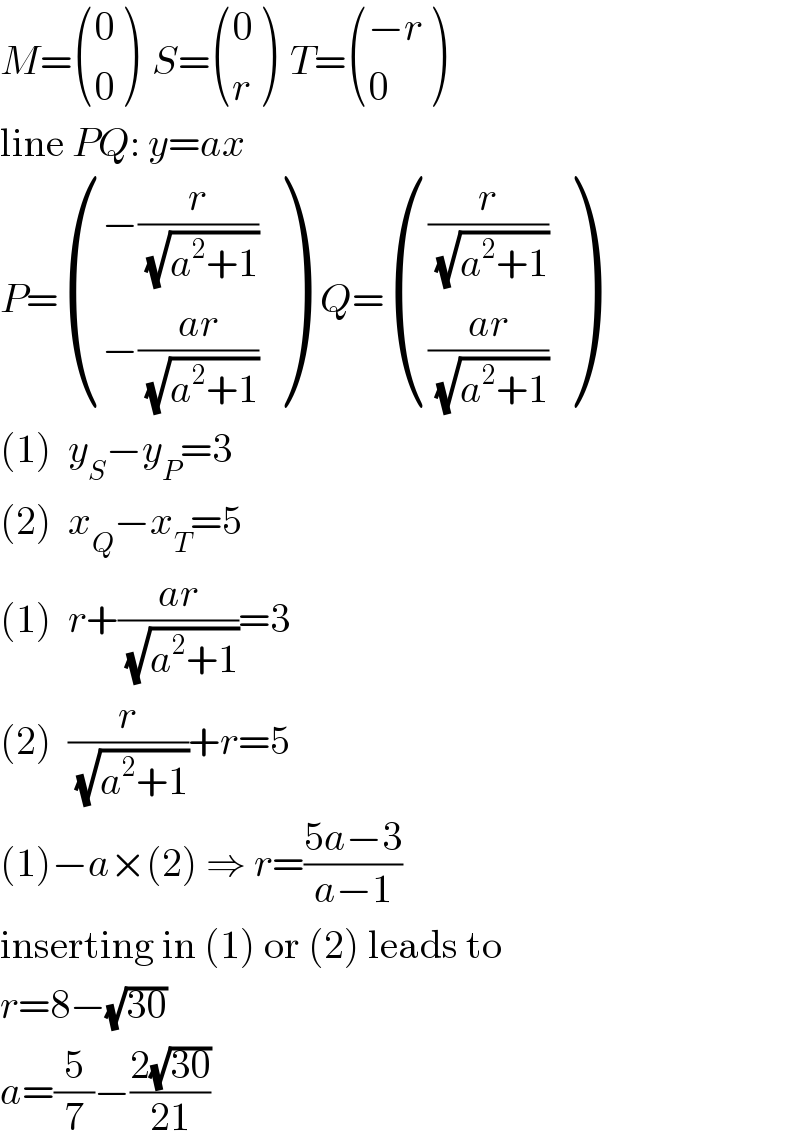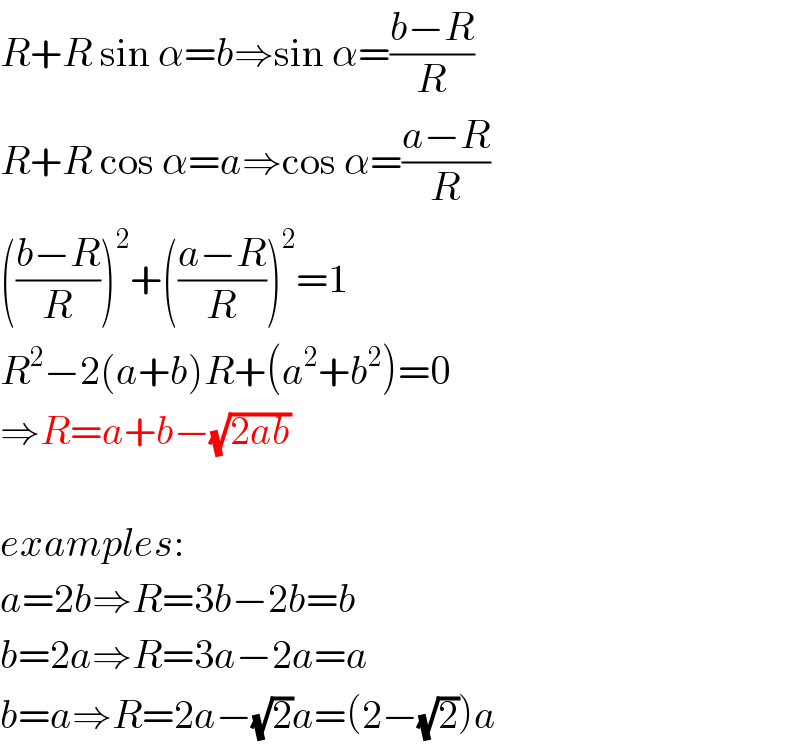
Question and Answers Forum
Question Number 51849 by ajfour last updated on 31/Dec/18

Commented by ajfour last updated on 31/Dec/18

Commented by mr W last updated on 31/Dec/18

Commented by ajfour last updated on 31/Dec/18

Answered by MJS last updated on 31/Dec/18

Commented by ajfour last updated on 31/Dec/18

Commented by MJS last updated on 31/Dec/18

Answered by mr W last updated on 31/Dec/18

Commented by mr W last updated on 31/Dec/18

Commented by ajfour last updated on 31/Dec/18

Answered by ajfour last updated on 31/Dec/18

